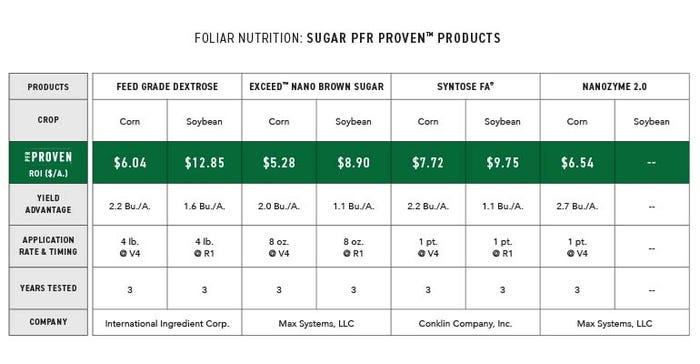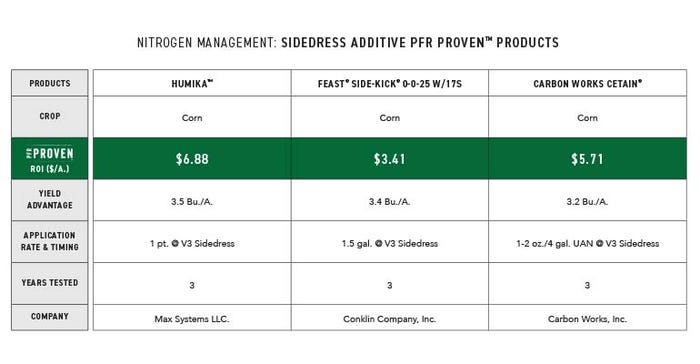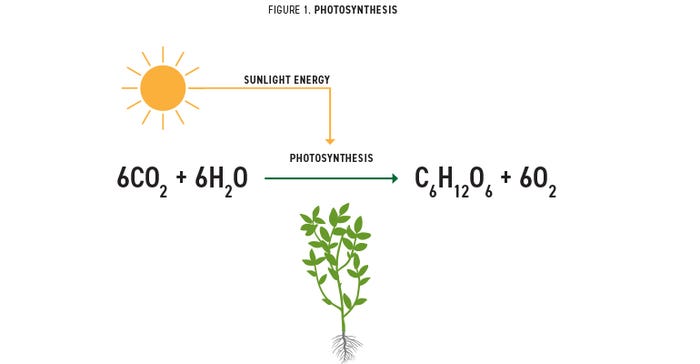December 1, 2022

Sponsored Content
What is carbon? Carbon is the chemical element identified with the symbol C. It is found almost everywhere, seen and unseen. All organic compounds, such as proteins, carbohydrates, and fats contain carbon. Plant, animal, and tissue cells consist of carbon compounds designed to hold the structure together.
Carbon exists in inorganic compounds like carbon dioxide, which you and I breathe out to the tune of over two pounds per day. Together, this makes up approximately 0.04% of our atmosphere. Other carbon containing inorganic compounds include coal (an impure form that carries a lot of energy), diamonds (carbon in the purest form, giving them such a high value), and activated charcoal, primarily found in purification and filtration systems. Carbon is often referred to as the backbone of life on earth. It holds so many positive attributes and, when out of balance, can be perceived as a negative.
CARBON CREDITS
Carbon as carbon dioxide (CO2) is being measured at higher numbers in the atmosphere today than years prior, stirring the carbon credit market. Carbon credits have become a hot topic in agriculture over the past couple of years. The concept behind the carbon credit is simple: industries or businesses that cannot reduce the carbon footprint of their manufacturing or operational process, fund projects or practices that reduce the carbon footprint.
Dollars available go towards solar or wind power, forestry services for better tree management, and farmers for the addition of cover crops or reduced tillage. This process simply credits those that are encouraging or increasing what God has already designed: the photosynthesis process. Photosynthesis is the process by which plants use sunlight energy to synthesize food from carbon dioxide and water. In this process, carbon from CO2 is used by growing plants to build tissue, transport water and nutrients, and feed soil biology in symbiotic relationships.
This storage and utilization of carbon is also known as carbon sequestration, the process of capturing and the long-term storing of atmospheric carbon or other forms of carbon in plants, soil geologic formations, and the ocean. Untouched grass prairies store the highest amount of carbon in the plant matter that is living below the surface, sometimes to depths of over 20 ft. Once disturbed, this living carbon becomes organic matter and, overtime, can decrease.
CARBON IN AGRONOMY
Carbon in agronomy is different. Carbon in agronomy is the action of adding carbon to the agronomy program, whether through growing cover crops to increase soil activity, with fertilizers to buffer the salts, or as a food source for biology to consume. I’ve identified three categories of carbon in agronomy that can increase yields and directly increase return on investment, similar to applying nitrogen.
CARBON HOLDS
Soils that are low in organic matter, or with low Cation Exchange Capacity (CEC) measurements struggle to hold water and nutrients. Carbon has a unique property; it has many rings of storage to it, containing four electrons in its outermost shell, allowing it to build four bonds. What does that mean for us farmers? When added in the right amounts to a fertility program, clean carbon sources can increase the bond of that fertilizer application to the soil particles, keeping it near the application zone longer.
Carbon binds to nitrogen covalently to form the many molecules essential for cellular function. The right carbon source and the nitrogen application can prove beneficial. Two carbon products have earned a PFR Proven™ status over the past four years of testing, Humika™ and CetaiN®. Humika is a clean carbon source that, at 1 pt./A. in a sidedress nitrogen application, provides an average ROI of $6.88/A. CetaiN® is also a clean source of carbon, but different in the sense that it has a high level of hydrogen and oxygen already on the carbon molecule to better balance with nitrogen for the cellular functions. It has shown a $5.71/A. ROI advantage in our PFR testing.
Activated carbon, as in water purifiers, can also buffer the salt impact of fertilizers, increasing the safety of the fertilizers to soil biology and plants, opening opportunities to test new application methods. Consult your local supplier of these products for best management practices on your soils.
CARBON FEEDS
Carbon delivers a food source for biology. Living organisms ranging from humans to soil biology need three things: oxygen, water and food. The most common carbon food sources are fats and carbohydrates. Carbon is the primary molecular truck that delivers the food for survival. The most common carbon food source found in agronomy applications is sugar. Sugar is a source of energy and, when applied in agriculture, can stimulate the biology, giving it a boost. Four sugar products have earned PFR Proven status within years of testing sugar in various ways. When applied at the right time, these products can feed your biology. Consider a sugar application at the R1 growth stage on soybeans and in-furrow or the V4 growth stage on corn. You are already spending money on nutrients for plant development, so think about investing in your soil biology with sugar.
CARBON BUILDS
Soil is defined as a mixture of organic matter, minerals, gases, liquids, and organisms that together support life. The ideal soil composition is made of 45% mineral matter, 5% organic matter, and 50% porous that contain a balance of water and air. The key to ideal soils is building the right balance. Cover crops in an agronomy program can keep soils balanced, active, and building. Think of the prairies or fence rows that have gone decades untouched. Why are they so fertile? Why do you never see a prairie field “drown out”? Why, when turning one over, the yields are significantly higher in those spots? It all has to do with balance.
These prairies and fence rows didn’t get this way over night or in a single year. When plants are alive and active, they are capturing CO2 from the atmosphere, utilizing this carbon to build tissue, storing it deep within plant shoots and roots. When they decay after a reproductive cycle, humus, organic matter, and a food source are created and keeps biological cycles active.
You don’t need the money from the carbon credits to incorporate cover crops on your farm in a profitable way. For those in the north, some of the best practices are utilizing cover crops to simply keep something growing in the soil after small grains or canning crops are harvested mid-summer. For those further south, cover crops can bridge the gap between cash crops where temperatures and conditions allow plants to grow and thrive. Or maybe you are using them to reduce the weed pressure in organic or non-GMO cropping cycles. Either way, here at Beck’s, we continue to explore ways to better understand the right blend of plants for the perfect cover crop mix and testing through PFR best manage practices for increasing ROI. For more information on our cover crop offerings, visit BecksHybrids.com/Products/Small- Grains/Cover-Crop.
YOU DON’T NEED A CARBON CREDIT TO PROFIT FROM CARBON
Although carbon is gaining attention today in agriculture through carbon credits, carbon in agronomy is nothing new. God put this cycle that revolves around carbon into action when he created the earth; the light, atmosphere, plants, sun, and creatures to complete it, in that order. Seeking the understanding, balance, and place for carbon in your agronomy program can be a more consistent way to profit from carbon.



Beck's - Farmers At Heart® - revolutionized the customer seed buying experience by remaining true to a foundation built on faith, family, and farming. Founded in 1937, Beck's appreciates the farmers who have helped them become the largest family-owned retail seed company and the third largest seed brand in the United States. The Beck family is now in its fifth generation of family members who work in the business to honor God and help farmers succeed. The Beck family and team of employees help farmers achieve success from generation to generation through authentic customer experiences, product diversity, seed quality, and performance. With a home office located in Atlanta, Ind., Beck's serves farmers throughout the Midwest and Mid-South. For more information about Beck's Superior Hybrids, Inc., visit www.beckshybrids.com.
About the Author(s)
You May Also Like




